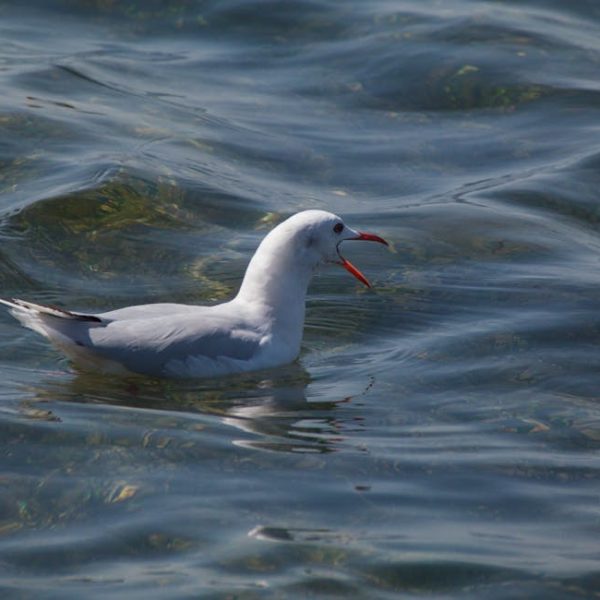An enthusiast, birdwatcher, or anyone simply fascinated by the avian world would have probably wondered at some point: Just how many bird orders exist? The biodiversity among birds is not just staggering, it’s enthralling. Bird orders are a hierarchical system that scientists use for categorizing and identifying bird species based on shared characteristics and evolutionary likenesses.
Below are some of the major bird orders we’ll be exploring throughout this article:
- Passeriformes
- Sphenisciformes
- Falconiformes
- Piciformes
- Trogoniformes
- Many more
Passeriformes: The Songbirds Rule
Passeriformes, also known as perching birds or songbirds, are dominant in the world of avians. In fact, they comprise over half of the world’s bird species – an impressive testament to their adaptability and diversity.
Did You Know?
With over 6,500 species, the order Passeriformes boasts more species than any other bird order. Among them are the ever-familiar sparrows, finches, and blackbirds, as well as the more exotic versions like the Australian Lyrebird, renowned for its extraordinary mimicry skills.
Penguins and Hawks: Sphenisciformes and Falconiformes Ancillary
Penguins (Sphenisciformes) and birds of prey like eagles and hawks (Falconiformes) form two distinct orders, each fascinating in their unique ways. Penguins have adapted to aquatic life, featuring streamlined bodies and wings that act more like flippers, while birds of prey are known for their keen eyesight and powerful talons.
| Penguin Species (Sphenisciformes) | Birds of Prey (Falconiformes) |
|---|---|
| Mostly aquatic | Terrains and skies |
| Wings act like flippers | Powerful, broad wings |
Discovering the Underrated: Piciformes, Trogoniformes, and More
There are bird orders that often go unnoticed or unrecognized by the casual observer. The bright-colored toucans from the order Piciformes and the exquisite Trogons of Trogoniformes are rarely spotlighted, despite their unique characteristics and beauty.
Birdwatcher’s Checklist:
- Check off the Piciformes by spotting a woodpecker in North America or a Jacamar in South America.
- Spot a Trogon’s unique eye-ring and straight bill characteristic to tick off the Trogoniformes from the list.
The vast array of bird orders is representative of their evolutionary journey, each diversifying and adapting over time to various habitats and lifestyles. Considering this biodiversity can enrich your birdwatching experience and intensify the appreciation for these fascinating creatures.
The Evolutionary Path: A Tale Told Through Bird Orders
The vast assortment of bird orders in existence today is a profound landmark of evolution, speaking volumes about the adaptability and diversity that life on Earth is capable of displaying. This is the story told by the avian world, of divergence and specialization, propelling the diversification of species and the rise of entire orders.
Evolutionary Journey Timeline
- 65 Million Years Ago: Primitive bird groups arising following the extinction of non-avian dinosaurs.
- 50 Million Years Ago: Appearance of the earliest Passeriformes (perching birds).
- 23-5.3 Million Years Ago: Numerous bird orders, including modern raptors and penguins, develop during the Neogene period.
Pro Tips for Aspiring Birdwatchers
- Study – Equip yourself with a good bird taxonomy guide, and learn to recognize the characteristics of each bird order.
- Observe – Invest in a good pair of binoculars. Observation is key in birdwatching, and high-quality binoculars will enrich the experience.
- Connect – Join local birdwatching clubs or online forums. The shared experiences can be invaluable, and the company can make the learning journey more interesting.
Why Bird Orders Matter: The Role in Conservation
Understanding bird orders isn’t just a curiosity or the domain of ornithologists; it has major implications for conservation as well. Insights into bird diversity helps target conservation efforts effectively and makes us aware of the habitat requirements and threats faced by different bird orders.
Every little bit counts when it comes to bird conservation. Here are some ways you can help:
- Incorporate bird-friendly aspects into your garden or balcony, like bird feeders or small water bodies.
- Be a responsible bird watcher. Keep a respectful distance and do not disrupt the bird’s natural behavior.
- Support local and global bird conservation organizations with donations or volunteer work.
- Be mindful of the impact of your lifestyle on birds’ habitats and make a conscious effort to reduce any adverse effects.
So the next time you look up and see a bird soaring across the sky or hear a sweet melody wafting from a nearby tree, remember the complex and fascinating system that classifies these creatures into orders. This knowledge adds yet another layer of awe to our appreciation of these winged wonders, encouraging us towards their preservation for generations to come.
Key Takeaway:
- Bird orders are a hierarchical system used by scientists to categorize and identify bird species based on shared characteristics and evolutionary likenesses.
- The Passeriformes, also known as songbirds, is the most diverse order, comprising over half of world’s bird species.
- Other notable orders include the Sphenisciformes (Penguins) and Falconiformes (birds of prey), each with unique characteristics and adaptions.
- The diversity among bird orders is reflective of their extensive evolutionary history and adaptation to various habitats.
- Understanding bird orders plays a critical role in effective and targeted conservation efforts.
Bird watching and understanding different bird orders can greatly enhance our appreciation for biodiversity and the grandeur of evolution. Let’s continue to empower ourselves with knowledge and aim to conserve the beautiful life forms that share our planet with us. Remember, every little effort to cultivate bird-friendly environments counts towards conservation.
FAQs
Q: What role does recognizing bird orders play in bird watching?
A: Recognizing bird orders enhances bird watching by allowing observers to understand shared characteristics and evolutionary similarities, ultimately enriching the overall experience.
Q: How can I be a more responsible bird watcher?
A: You can be a responsible bird watcher by maintaining respectful distance from the birds, not disrupting their natural behavior, and following ethical wildlife viewing guidelines.
Q: Aside from bird watching, how else can I contribute to bird conservation?
A: Besides bird watching, you can contribute to bird conservation by incorporating bird-friendly aspects into your surroundings, supporting bird conservation organizations, and by being mindful of your lifestyle’s impact on bird habitats.
Q: What are some characteristics that help in identifying different bird orders?
A: Some characteristics used to identify different bird orders include size, body shape, beak type, wing shape, tail shape, color patterns, vocalizations, behavior, and habitat.
Q: Are all bird species within an order similar?
A: While bird species within an order share some common characteristics due to their common ancestry, they can greatly differ in many aspects due to the adaptations resulted from living in different environments or having different lifestyles.
Feel free to share this article with your fellow bird enthusiasts and keep exploring our website for more fascinating insights into the world of birds and biodiversity!












